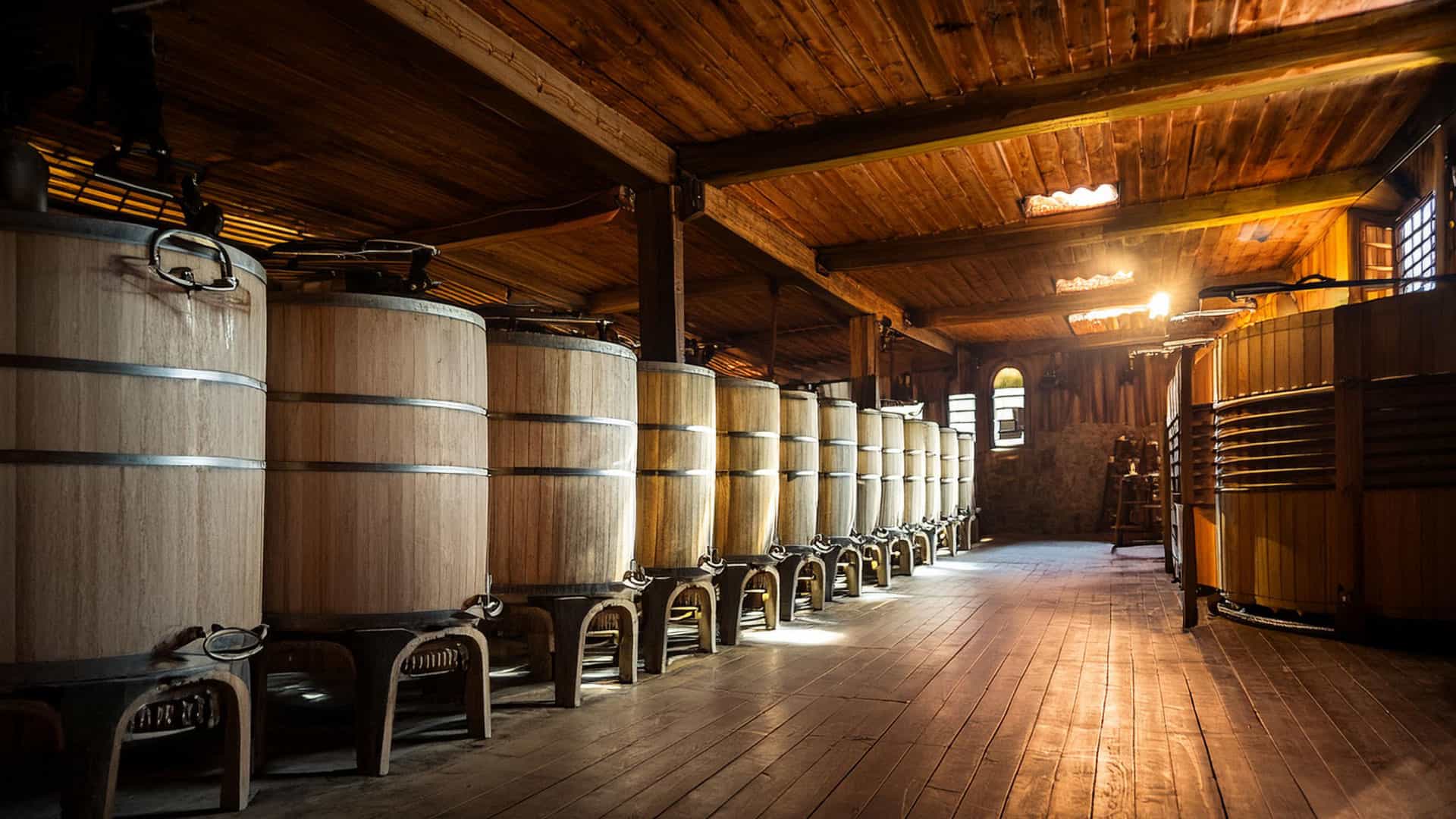The production of white wine
The production of wine is also known as winemaking, vinification or vinification. White wine is made from grapes harvested in the vineyards between September and October (with the exception of sweet wines, whose grapes can be harvested as ice wine in January, depending on the weather). A white wine can be made from both white grapes and red grapes.
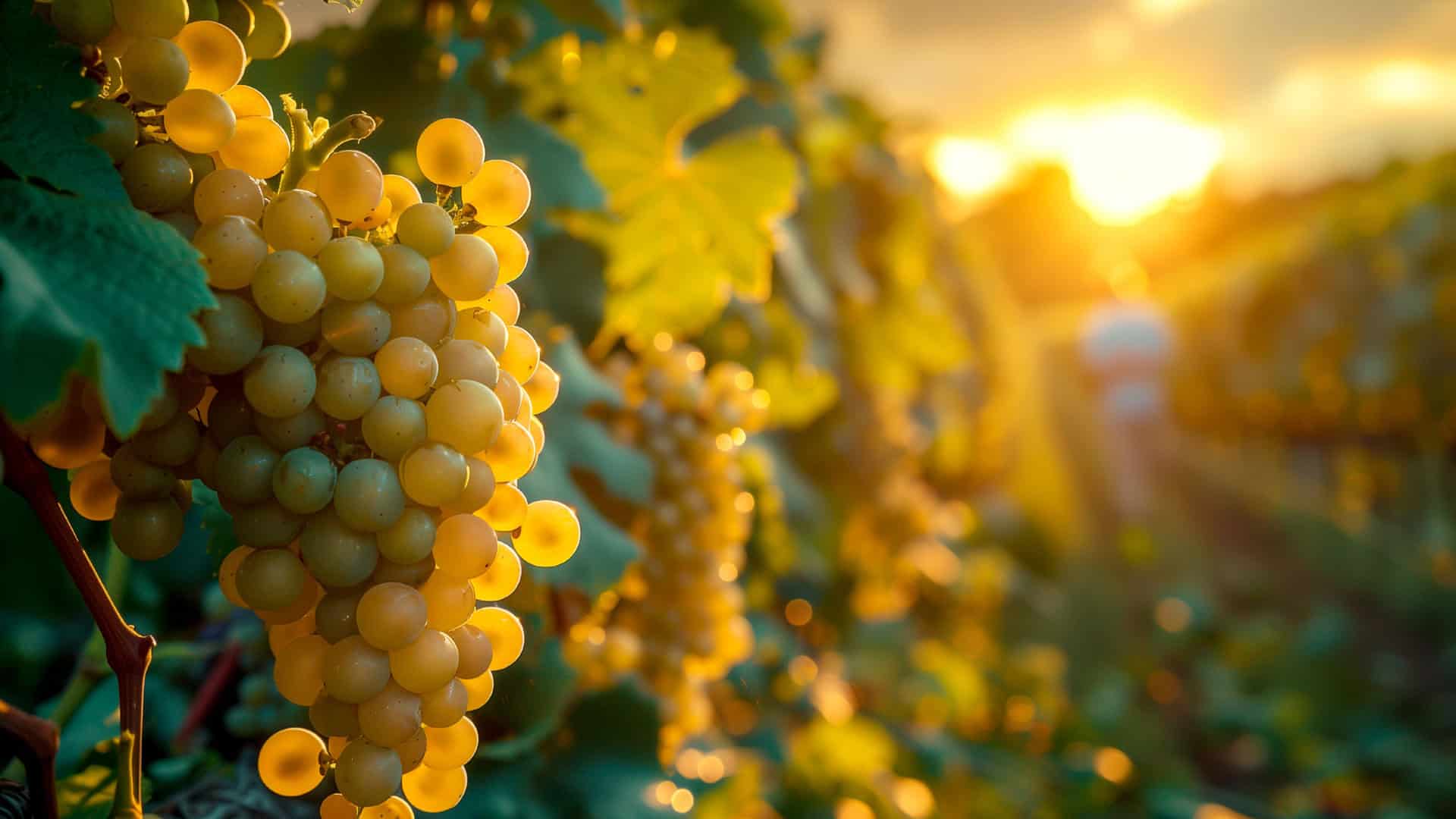
After harvesting, the harvested grapes are first subjected to a quality control and then separated from the stems and combs. These contain bitter substances that would have a negative effect on the taste of the wine. The removal process is also known as destemming. The grapes are then crushed in a type of mill. The result is a viscous mixture consisting of the pulp, the grape seeds, the grape skins and the grape juice. The resulting mixture is called mash, and the duration of contact between these individual components is known as the maceration time. This is usually between one and six hours and is used to extract flavors, phenols and other soluble substances from the berries. The dissolved substances influence the sensory properties, the structure and also the shelf life of the white wine. Another advantage of the maceration time is that certain enzymes are released, which improve the pressability of the mash in the subsequent step.
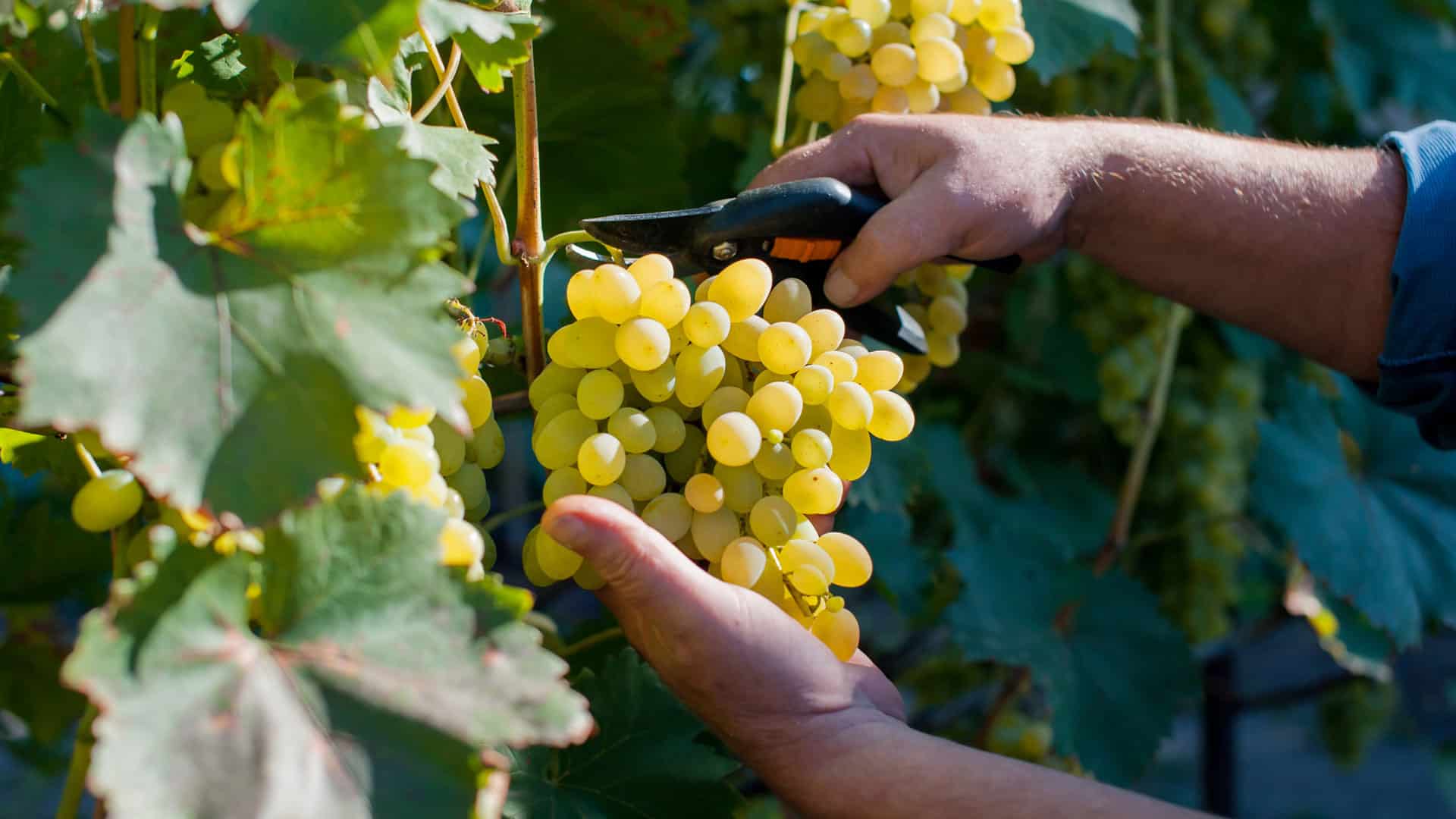
To prevent the must from turning color when red wine grapes are used, the maceration time must be minimal in these cases. A classic example is a Blanc de Merlot, i.e. a white wine made from Merlot grapes.
The grapes are then pressed in a wine press. The term “pressing” comes from Latin and means “to tread with the feet”. This custom is of course no longer common today. Instead, the mash is pressed in a wine press, i.e. the sweet must is gently separated from the solid components in order to prevent grape seeds, for example, from being crushed and releasing their unwanted bitter substances into the must. After pressing, the must is filled into suitable containers, usually tasteless stainless steel tanks. Depending on the grape variety, fermentation in wooden barrels is also possible. Fermentation is triggered by natural yeast or by the addition of cultured yeast. This takes place at a temperature of 12° to 22° C and usually lasts six to eight days for white wine. The lower the temperature during fermentation, the fruitier the aromas in the wine.
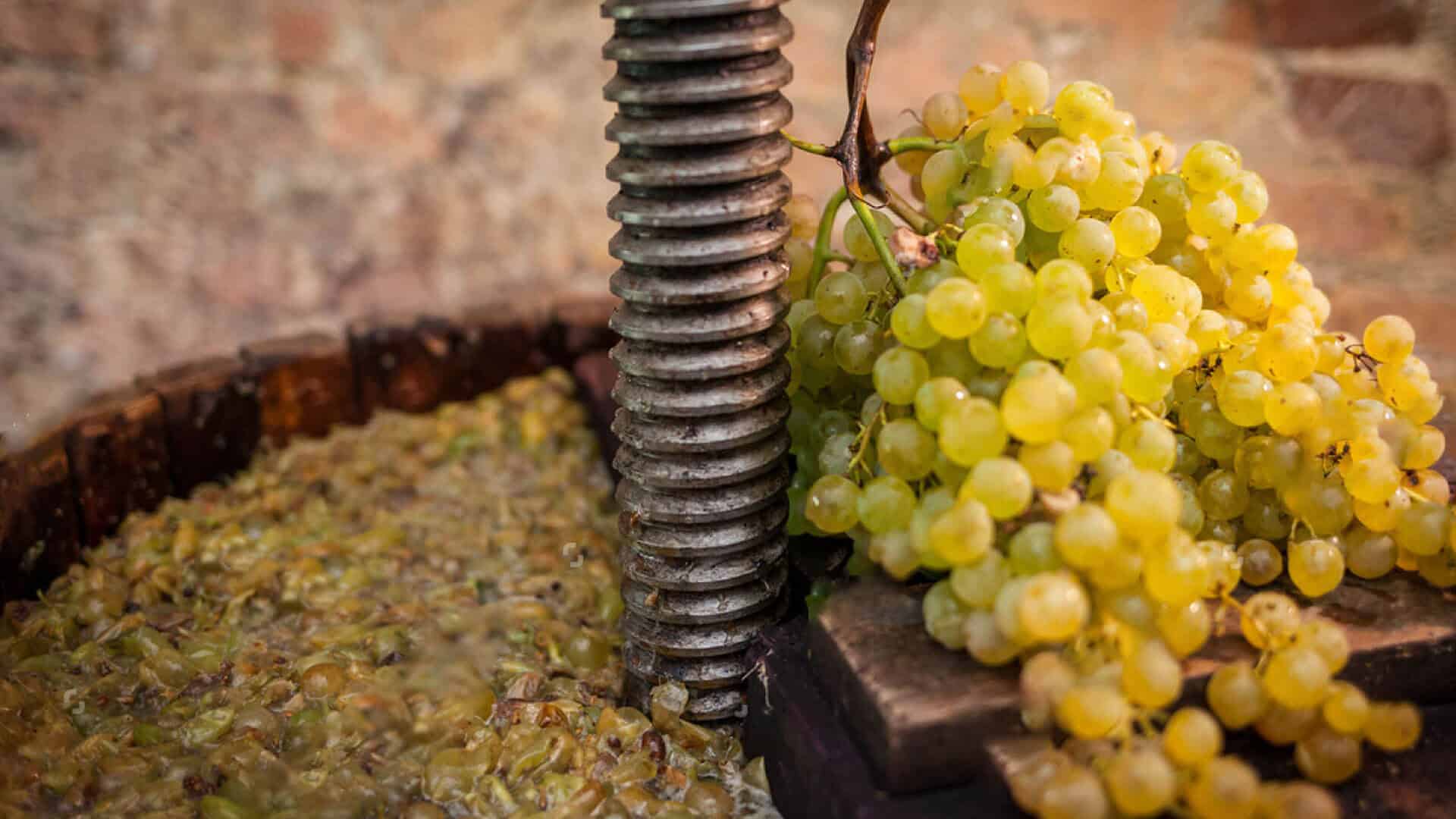
Depending on how the winemaker wants to age his white wine, he can let the fermentation process run its full course, i.e. until all the sugar has fermented. Or he can stop the fermentation process early in order to obtain a wine with residual sweetness. This is possible, for example, by mechanical cooling or by adding high-proof alcohol, which causes the yeast to die. During this phase, a second fermentation, known as malolactic fermentation, can occur spontaneously or controlled by the cellar master. This process is also known as malolactic fermentation, as certain lactic acid bacteria convert the malic acid in the wine into milder lactic acid.
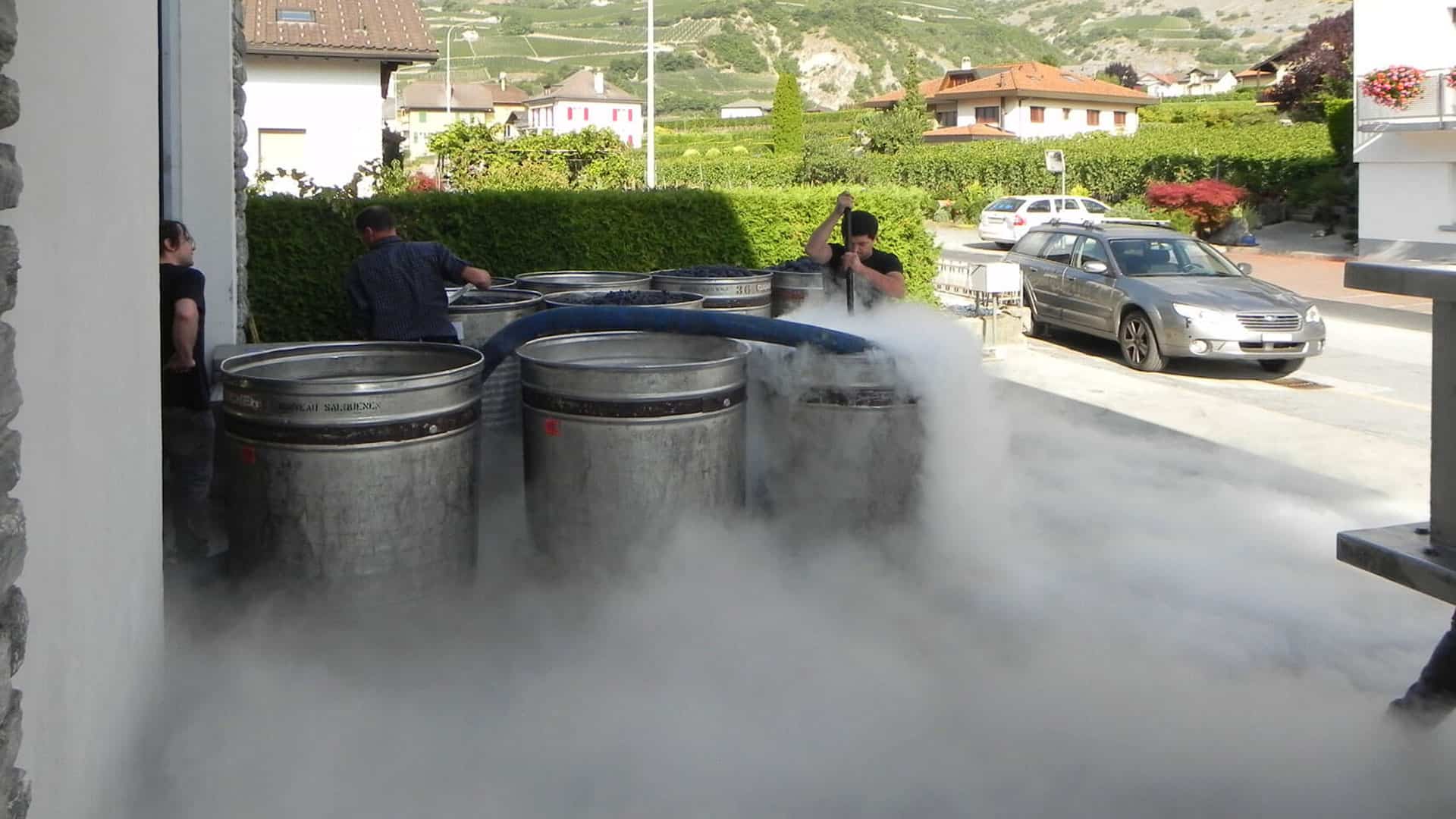
The fermented must is then racked, i.e. the wine is separated from the yeast deposited at the bottom of the container, usually by suction from above using a pump. The young wine is then transferred to new containers where it can mature for several months, depending on the quality and the winemaker’s ideas, and develop its structure thanks to the fine yeast, which breaks down the proteins contained in the wine.
If the winemaker has made a complex and powerful white wine, and depending on the structure and characteristics he wishes to impart to this wine, all or part of this wine goes into wooden or barrique barrels for a longer period of time. The wood of these barrels gives the wine certain additional flavors and colors that can be beneficial to the quality of the wine. It should be noted that new oak barrels give off very dominant wood tones, which can mask the primary aromas of the white wine, which would not be desirable. Older barrels, on the other hand, give off very few of these flavors and can even impart unpleasant, stale and musty notes. For this reason, the winemaker usually leaves part of his wine in tasteless containers, a second part in newer barrels and the last part in older barrels and later blends the contents of the three containers to make the final wine.
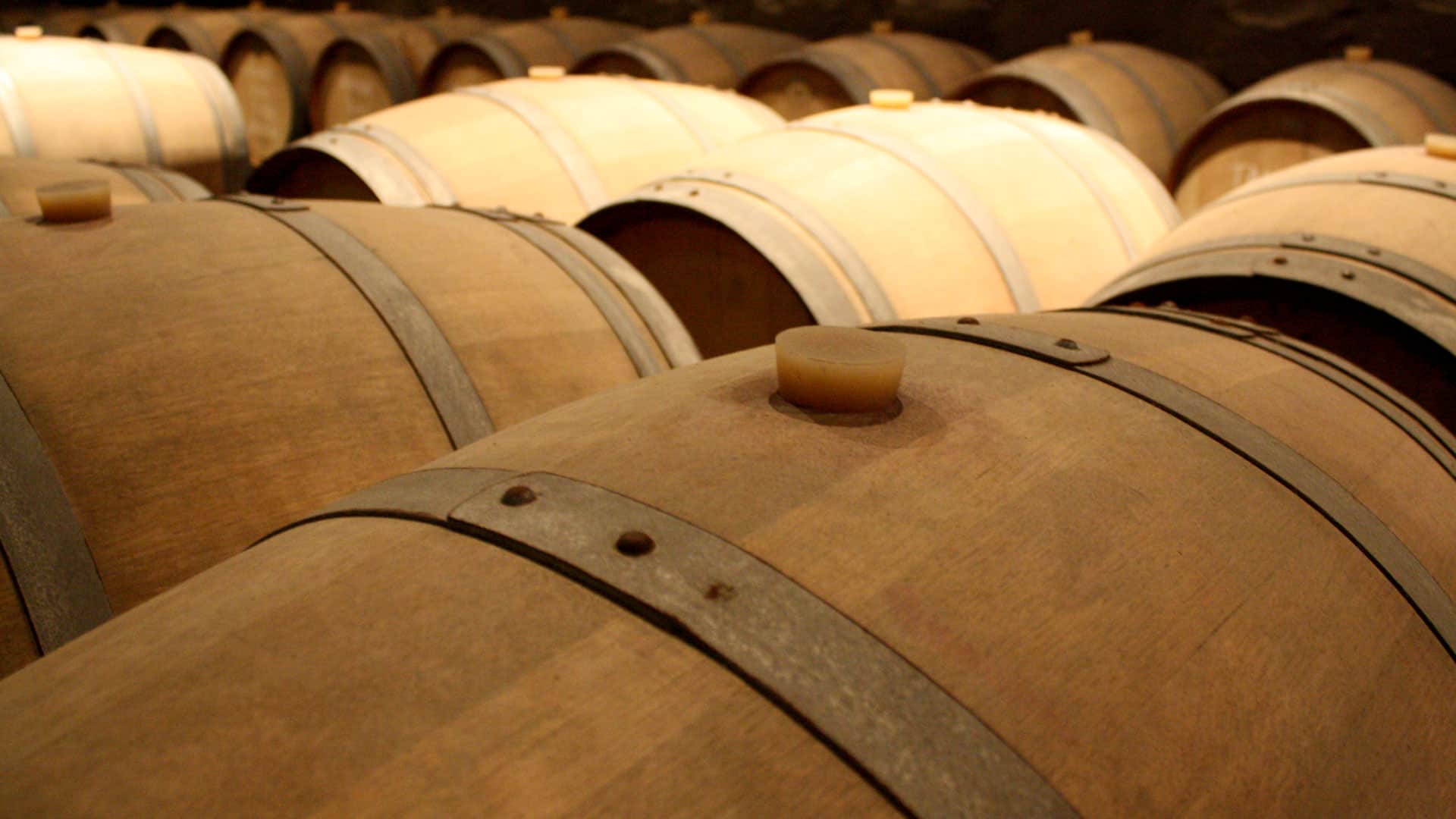
At the end of this process, the wine is filtered and sometimes even fined before being bottled and sold.
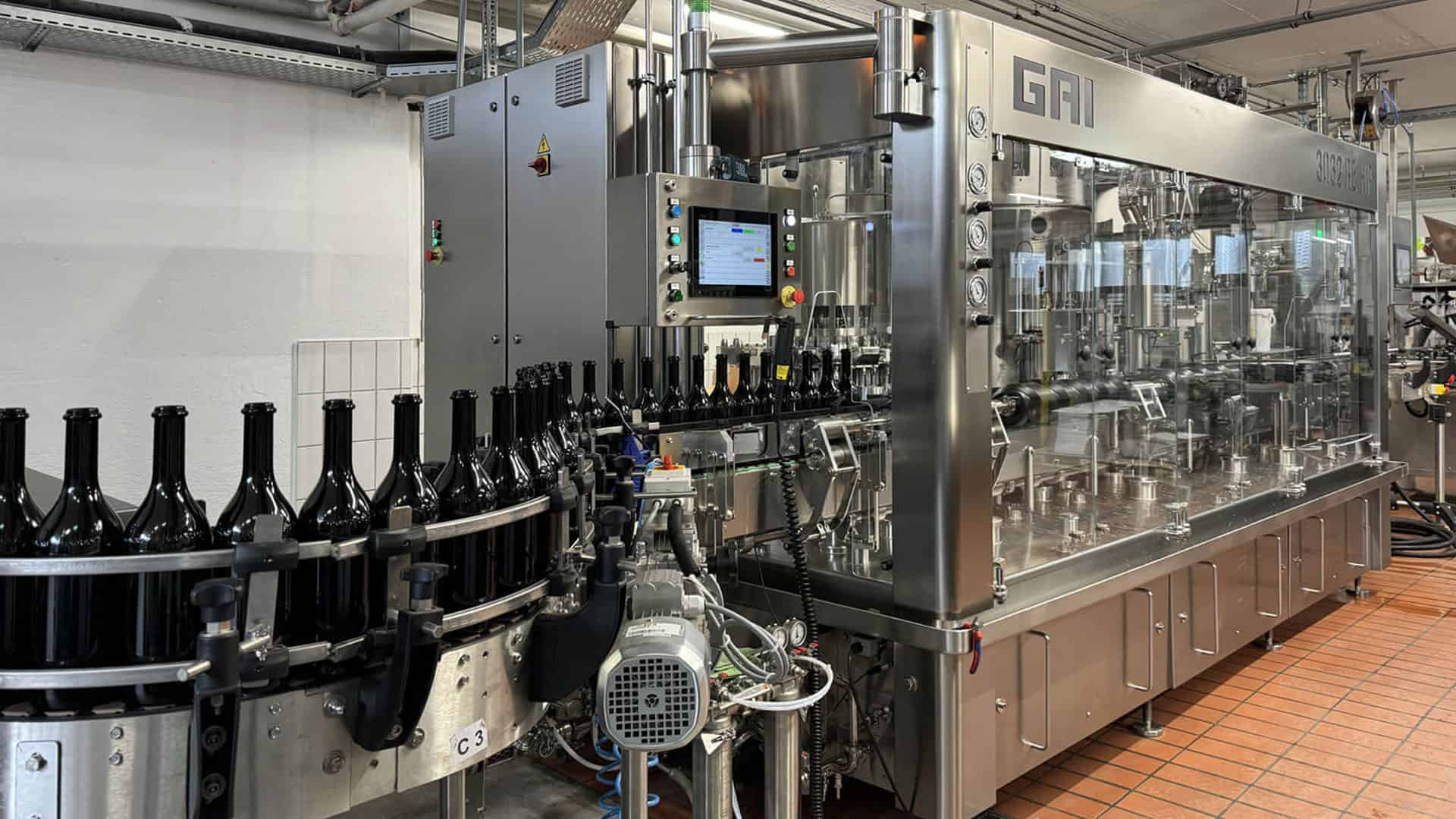
FAQ:
Why is yeast so important for fermentation?
During fermentation, the yeast converts the sugar into alcohol. Without the yeast, there would therefore be no fermentation and therefore neither wines from white grapes nor wines from red grapes.
How does the yeast get into the mash?
A distinction is made between natural yeasts and cultured yeasts, with natural yeasts being found on the surface of each individual grape. If the winemaker relies on natural yeasts in the production of wine, this is referred to as the natural fermentation process. Alternatively, there are also cultivated yeasts, also known as cultured yeast. If the winemaker relies on cultured yeast for the production of his wine, he can control the fermentation process better.
At what temperature does the fermentation of white wine take place?
White wine is fermented at a temperature of 12° to 22° Celsius, depending on the grape variety and how pronounced the aromas should later be in the wine. This step in the wine-making process is also known as alcoholic fermentation, as the yeasts convert the sugar into alcohol and carbon dioxide (which is released).
What is the structure of a grape and what ingredients does it contain?
A bunch of grapes consists of several berries on a common stem. Each berry contains pulp, juice, skin and seeds. The grape is rich in water, sugar, organic acid, vitamins, minerals and secondary plant substances such as polyphenols. Sugar and acid must be present in a balanced ratio so that a well-balanced wine can be bottled later.
Why is the pressed juice removed from the mash after a short time during the production of white wine?
The skin of the berry contains bitter substances. These should not pass into the pressed juice, as they could have a negative effect on the quality of the subsequent wine. For this reason, the must must not be left on the mash for too long. Instead, in the production of white wine, the mash is removed from the must after a short time of just one to six hours.
How can the winemaker influence the process of making white wine step by step?
In wine, we speak of primary aromas, secondary aromas and tertiary aromas. The primary aromas are the aromas contained in the grape. The winemaker has no influence on these in the production of any form of wine, including white wine and red wine. Secondary aromas are the aromas that develop during fermentation and later maturation of the wine in the cellar. The winemaker does have an influence on these wine aromas during production, as they develop after the first fermentation and are influenced by microbial activities such as malolactic fermentation or maturation on the lees (sur lie). Typical secondary aromas include butter, toast, vanilla, hazelnut and yeast. While the roasted aromas come from ageing in barriques, the buttery notes come from malolactic fermentation. And yeasty notes come from the bâtonnage. Tertiary aromas are also known as mature aromas. They arise when a great wine that has the potential for the ageing process continues to mature in the bottle.
When should the winegrower start harvesting the grapes for wine production?
The winemaker should start harvesting the grapes for the production of wine when the grapes are ripe. This means that the juice of the grapes contains enough sugar to be converted into alcohol during fermentation. The ratio of sugar to juice gives the so-called Oechsle degree. At the same time, the winemaker must ensure that not all the acid has been broken down in the grape. If the proportion of acidity is too low, the wine will later appear too mild and clumsy in the glass. This is why a balanced ratio of acidity and sugar in the grape juice at the time of harvest is very important for the production of white wine and for wines in general.
What is meant by mash in the production of wine?
In the production of wine, “mash” refers to the mixture of crushed or crushed grapes, including the skins, seeds and juice. This process typically takes place after the harvest during the production of wine, especially in the production of red wine, where the mash remains in contact with the juice during fermentation to extract color, aromas and tannins from the skins.
Why is the temperature higher when fermenting red wine than white wine?
The temperature during the fermentation of red wine is usually higher than for white wine because the grapes from which red wine is made usually require a longer maceration time to extract color, aromas and tannins from the skins. A higher temperature accelerates the extraction process in the production of red wine by increasing the activity of the yeasts and supporting the breakdown of the color and aroma substances from the grape skins. White wine, on the other hand, is often fermented at cooler temperatures to allow slower extraction of color and tannins and to preserve the freshness and fruitiness of the grapes.
Why do some white wines have aromas of wood?
Due to their complexity and aromatic structure, some berries used for the production of white wine are particularly suitable for ageing in wooden barrels, oak barrels or barriques. The barrel releases roasted aromas of wood, smoke or vanilla into the juice of the berries. This is also referred to as secondary aromas, which are created during wine production after fermentation. This is the step in the winemaking process in which the winemaker has the opportunity to influence the taste and aroma structure of the future wine, in addition to the aromas of the berries, by maturing the wine in oak barrels after the harvest.
Why is the color of white wine white?
The color of white wine is white because all berries used to make white wine, rosé wine, red wine and sparkling wine basically have colorless pulp and therefore also colorless fruit juice. This is why white wine or colorless must is often referred to as white. The color or colorants are found solely in the grape skin. This means that berries that are otherwise used to make red wine can also be used to make white wine. In this case, the must must be drawn off the mash immediately or relatively quickly after crushing and pressing the berries in order to prevent the color from the grape skins from transferring into the must. A classic example of the production of white wine from red grapes is Blanc de Merlot. A new trend in white wine production is orange wine. When making this white wine, the grapes are placed in stainless steel tanks without being crushed and remain there for around eight days. At the beginning, so-called remontage processes take place daily, followed by maceration. This white wine is called orange wine because it takes on a light orange hue due to the long contact between the fruit juice and the grape skin.

